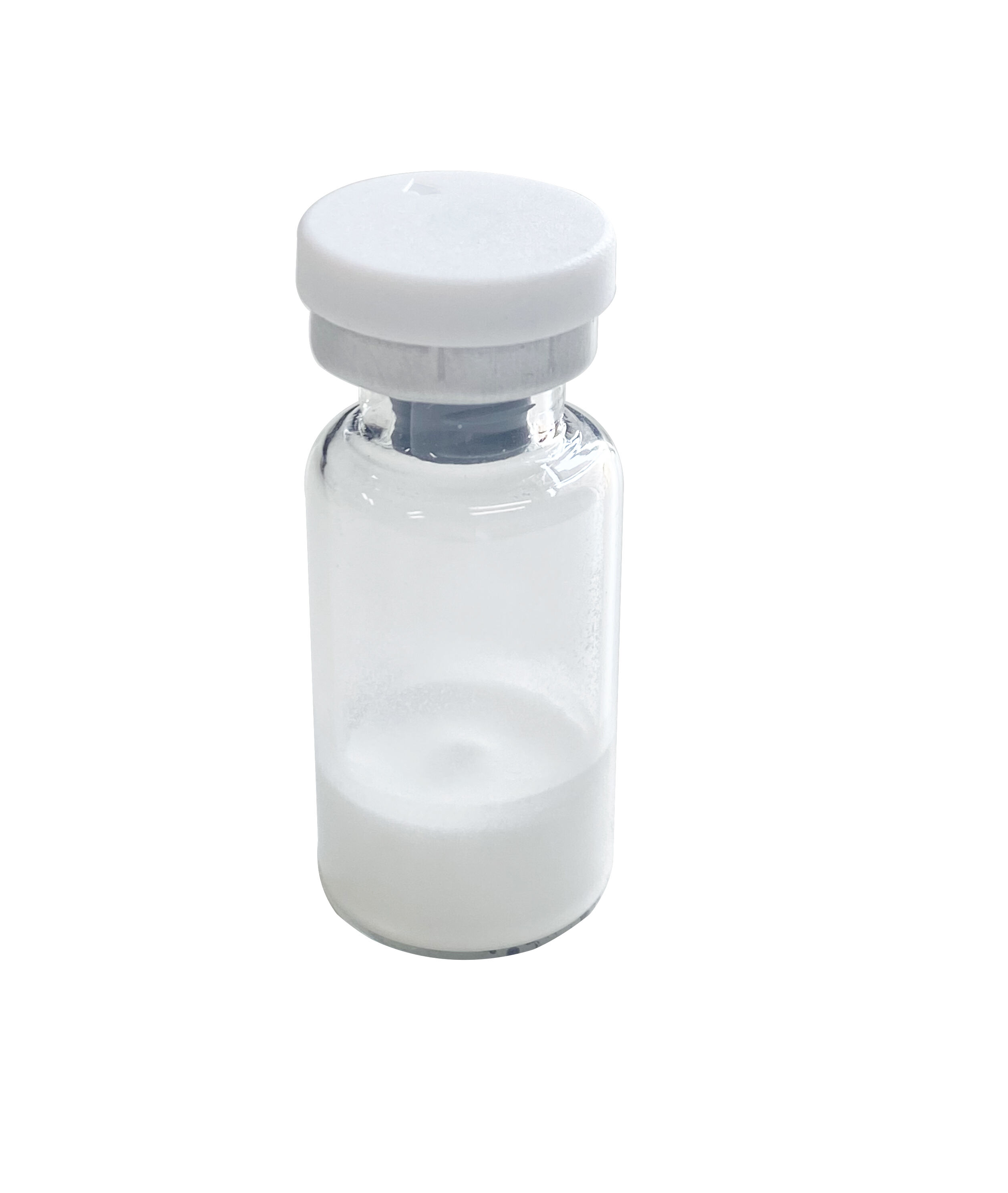Zrozumienie rodzajów i skuteczności zastrzyków odchudzających
Popularne typy zastrzyków odchudzających (Wegovy, Ozempic, Saxenda itp.)
Iniekcje wspomagające redukcję masy ciała, zatwierdzone przez FDA, takie jak Wegovy (zawierający semaglutyd) i Saxenda (z liraglutydem), działają poprzez oddziaływanie na hormony jelitowe, pomagając ograniczyć uczucie głodu. Zgodnie z badaniami klinicznymi, osoby przyjmujące Wegovy w dawce 2,4 mg straciły około 15% swojej masy ciała w ciągu około 68 tygodni, gdy równocześnie wprowadziły zmiany w stylu życia. Wynika to z tzw. badania STEP 1. Oba te leki należą do grupy zwanej agonistami receptorów GLP-1. Wymagają one specjalnego przechowywania w lodówce i mogą być uzyskane wyłącznie na receptę od lekarza, który będzie monitorował postęp w trakcie leczenia.
Jak agonisty GLP-1, takie jak semaglutyd, wspierają redukcję masy ciała
Leki agonistyczne GLP-1 działają przede wszystkim poprzez spowolnienie procesu opróżniania żołądka oraz redukcję dokuczliwych sygnałów głodu kierowanych do mózgu. Oznacza to, że ludzie zazwyczaj spożywają o około 20–30 procent mniej kalorii dziennie, bez konieczności stosowania restrykcyjnych diet czy pozbawień. Inną wartą wspomnienia korzyścią jest również poprawa wrażliwości na insulinę. Zgodnie z najnowszymi wytycznymi medycznymi z 2025 roku dotyczącymi leczenia semaglutydem, większość dorosłych pacjentów zmagających się z otyłością odnotowuje średnio 15,2-procentową redukcję masy ciała po ciągłym przyjmowaniu leku przez dwanaście miesięcy.
Iniekcje na receptę a dostępne bez recepty – kluczowe różnice
Tylko iniekcje na receptę są oceniane pod kątem bezpieczeństwa, dokładności dawkowania i skuteczności przez FDA. Alternatywy dostępne bez recepty często nie zawierają ujednoliconych substancji czynnych – badania FDA z 2023 roku wykazały, że 23 procent próbek zawierało nieopisane stymulujące substancje, takie jak sibutramina, co stanowi poważne zagrożenie dla zdrowia.
Porównawcza skuteczność zastrzyków zatwierdzonych przez FDA w leczeniu otyłości
| Lek | Składnik aktywny | Średnia utrata masy ciała (1 rok) | Rok zatwierdzenia przez FDA |
|---|---|---|---|
| Wegovy | Semaglutyd | 15-18% | 2021 |
| Saxenda | Liraglutide | 8-12% | 2014 |
| Zepbound | Tirzepatide | 18-22% | 2023 |
Badania bezpośrednie wskazują, że nowsze agonisty podwójne, takie jak tyrezapetyd (GLP-1/GIP), zapewniają lepsze wyniki, przy czym badania fazy 3 wykazują do 22,5% redukcji masy ciała.
Zapewnienie zgodności z przepisami i zatwierdzenia przez FDA
Wytyczne FDA dotyczące zatwierdzania i dystrybucji zastrzyków do odchudzania
FDA wymaga rygorystycznych badań klinicznych faz I-III w celu potwierdzenia bezpieczeństwa i skuteczności zastrzyków do odchudzania przed ich zatwierdzeniem. Jako organ regulacyjny nadzorujący corocznie towary konsumpcyjne o wartości 2,6 biliona dolarów, agencja egzekwuje ścisłe wymagania dotyczące łańcucha chłodniczego dla agonistów GLP-1, takich jak semaglutyd, oraz wymaga opakowań chronionych przed manipulacjami w celu zapobiegania fałszowaniu.
Dlaczego pozyskiwanie wyłącznie formulacji zatwierdzonych przez FDA jest krytycznie ważne
Produkty niezgodne omijają podstawowe kontrole jakości. Badanie z 2023 roku wykazało, że 14% nieautoryzowanych zastrzyków zawierało niskiej jakości substancje czynne. Formulacje zatwierdzone przez FDA spełniają obowiązujące standardy dobrej praktyki produkcyjnej (CGMP) pod względem sterylności i precyzji dawkowania – co ma kluczowe znaczenie dla bezpiecznej modulacji metabolizmu.
Czerwone flagi: rozpoznawanie niezatwierdzonych lub podrabianych produktów wstrzykiwanych do redukcji masy ciała
Objawy mogące wskazywać na problemy:
- Brak medycznego przesiewowego badania lekarskiego lub ważnego recepty
- Brak Narodowego Kodu Leku (NDC) na opakowaniu
- Ceny o 40–60% niższe niż średnie ceny rynkowe wersji zatwierdzonych przez FDA
- Budowanie marki ogólnikowej bez weryfikowalnych danych producenta
Studium przypadku: ostrzeżenia FDA dotyczące nieautoryzowanych dystrybutorów semaglutydu (2023)
W 2023 roku FDA wydało 23 pisma ostrzegawcze firmom sprzedającym niezatwierdzony semaglutyd. Analizy laboratoryjne ujawniły, że 17% próbek miało poziom endotoksyn bakteryjnych przekraczający dopuszczalne limity bezpieczeństwa, a 12% zawierało mniej niż 80% deklarowanej ilości substancji czynnej – co podkreśla zagrożenia związane z nieregulowanymi łańcuchami dostaw.
Ocena wiarygodności dostawcy i nadzoru medycznego
Rola uprawnionych pracowników służby zdrowia w przepisywaniu zastrzyków do odchudzania
Uprawnieni pracownicy służby zdrowia oceniają BMI, historię choroby oraz stan zdrowia metabolicznego przed przepisaniem leków takich jak Wegovy lub Saxenda. Monitorują postępy pacjentów podczas wizyt kontrolnych, dostosowują dawkowanie w miarę potrzeb i dostosowują leczenie do wytycznych klinicznych organizacji takich jak American Board of Obesity Medicine, minimalizując wystąpienie działań niepożądanych i poprawiając długoterminowe efekty terapii.
Jak sprawdzić dane dostawcy i licencję apteki
Renomowani dostawcy otwarcie prezentują licencje aptek stanowych i rejestrację FDA. Sprawdź legalność, korzystając z:
- Baz danych rad medycznych poszczególnych stanów
- Narzędzia Narodowej Asocjacji Rad Farmaceutycznych (NABP)
- Usługi weryfikacji niezależnych podmiotów, takie jak LegitScript
Unikaj dostawców ukrywających dokumentację lub działających za pośrednictwem międzynarodowych domen poza zasięgiem regulacyjnym USA.
Konsultacje telemedyczne i zapewnienie autentyczności recept
Platformy telemedyczne muszą korzystać z systemów zgodnych z przepisami HIPAA oraz przeprowadzać konsultacje wideo, aby wystawiać ważne recepty elektroniczne. Autentyczne recepty zawierają unikalny kod weryfikacyjny, numer DEA lekarza wystawiającego receptę oraz informacje o aptece wydającej lek. Usługi oferujące zastrzyki bez oceny pacjenta budzą podejrzenia o nielegalności.
Modele sprzedażowe bezpośredni do konsumenta kontra tradycyjne ścieżki kliniczne: ryzyko i korzyści
Chociaż modele sprzedażowe bezpośrednio do konsumenta zwiększają dostępność, często brakuje im istotnych zabezpieczeń:
| Proporcje | Sprzedaż bezpośredni do konsumenta | Ścieżka kliniczna |
|---|---|---|
| Nadzór medyczny | Ograniczone | Ciężki Monitoring |
| Dokładność dawkowania | Oznaczony przez pacjenta | Dostosowane przez lekarza |
| Reakcja na niepożądane zdarzenie | Samodzielne zarządzanie | Intervencja specjalisty |
Pacjenci korzystający z tradycyjnych ścieżek klinicznych utrzymują o 23% większą utratę masy ciała po 18 miesiącach, według badania opublikowanego w 2023 roku w JAMA.
Ocena bezpieczeństwa, jakości i przejrzystości produkcji
Pochodzenie i jakość czynnych składników farmaceutycznych (API) w zastrzykach redukujących masę ciała
Dostawcy wysokiej jakości pozyskują składniki farmaceutyczne z zakładów zarejestrowanych w FDA i prowadzą pełne rejestry śledzenia. Niezweryfikowane surowce są główną przyczyną zanieczyszczeń i niskiej skuteczności zastrzyków, co podkreśla znaczenie przejrzystych praktyk zakupowych. Niezależne laboratoria testują każdą partię, aby potwierdzić czystość i stężenie przed wpuszczeniem na rynek.
Zgodność z Zasadami Dobrej Praktyki Produkcyjnej (GMP) w zakładach produkcyjnych
Producenci muszą posiadać aktualny certyfikat GMP, weryfikowany poprzez regularne audyty niezależne. Te standardy wymuszają sterylne warunki produkcji, precyzyjną kalibrację sprzętu oraz kontrolę jakości powietrza – wszystkie te elementy są kluczowe dla zapobiegania zakażeniom mikrobiologicznym w terapiach iniekcyjnych.
Testowanie partii i dostępność Certyfikatu Analizy (CoA)
Zaufani dostawcy udostępniają specyficzne dla danej partii Certyfikaty Analizy (CoA), dokumentujące sterylność, aktywność oraz poziom endotoksyn. Każdy certyfikat CoA powinien zawierać daty przeprowadzenia badań, akredytację laboratorium oraz zgodność ze standardami sterylności USP <71>, zapewniając tym samym, że każda dawka spełnia wymagania bezpieczeństwa.
Poprawne przechowywanie, sterylność oraz standardy obsługi produktów iniekcyjnych
Aby zachować integralność peptydów, leki takie jak semaglutyd należy przechowywać w temperaturze 2–8°C na każdym etapie łańcucha dostaw. Dostawcy powinni korzystać z kontenerów transportowych z monitorowaniem temperatury oraz zapewniać potwierdzenie dostawy. Butelki muszą być wyposażone w nienaruszone zamknięcia, sterylną opakowanie oraz mieć wyraźnie oznaczone daty ważności, aby zagwarantować bezpieczeństwo podczas podawania.
Wsparcie pacjentów i gwarancje po zakupie od dostawców
Dostęp do bieżącej pomocy medycznej w trakcie leczenia
Bezpośrednie wsparcie kliniczne poprawia skuteczność leczenia. Badanie z 2023 roku Czasopismo Medycyny Otyłości wykazało, że pacjenci otrzymujący miesięczne konsultacje utrzymali przez 12 miesięcy 2,1 razy większą redukcję masy ciała niż ci, którzy nie byli nadzorowani. Reputacyjni dostawcy oferują bezpieczny dostęp do telemedycyny u licencjonowanych lekarzy specjalistów w celu dostosowania dawki leku i porad żywieniowych.
Polityka zwrotów, gwarancje satysfakcji oraz raportowanie niepożądanych działań
Dostawcy najwyższej kategorii oferują przejrzyste zasady zwrotów i gwarancje satysfakcji – uznane za najważniejszy czynnik wyboru przez 74% pacjentów w raporcie Medical Consumer Satisfaction Report z 2023 roku. Wybieraj dostawców z formalnymi systemami zgłaszania niepożądanych zdarzeń oraz protokołami wymiany uszkodzonych przesyłek; unikaj tych, którzy stosują oświadczenia typu "wszystkie sprzedaże są końcowe".
Monitorowanie działań niepożądanych i gotowość do sytuacji awaryjnych u renomowanych dostawców
Zgodnie z danymi FDA z 2023 roku, 68% ciężkich reakcji na semaglutyd miało miejsce wśród użytkowników dostawców nieposiadających wsparcia klinicznego 24/7. Upewnij się, że Twój dostawca oferuje:
- Udokumentowane procedury postępowania w przypadku anafilaksji
- Śledzenie temperatury w czasie rzeczywistym podczas transportu
- Bezpośredni dostęp do farmaceuty-kontaktu w nagłych sytuacjach
Spis treści
- Zrozumienie rodzajów i skuteczności zastrzyków odchudzających
-
Zapewnienie zgodności z przepisami i zatwierdzenia przez FDA
- Wytyczne FDA dotyczące zatwierdzania i dystrybucji zastrzyków do odchudzania
- Dlaczego pozyskiwanie wyłącznie formulacji zatwierdzonych przez FDA jest krytycznie ważne
- Czerwone flagi: rozpoznawanie niezatwierdzonych lub podrabianych produktów wstrzykiwanych do redukcji masy ciała
- Studium przypadku: ostrzeżenia FDA dotyczące nieautoryzowanych dystrybutorów semaglutydu (2023)
- Ocena wiarygodności dostawcy i nadzoru medycznego
-
Ocena bezpieczeństwa, jakości i przejrzystości produkcji
- Pochodzenie i jakość czynnych składników farmaceutycznych (API) w zastrzykach redukujących masę ciała
- Zgodność z Zasadami Dobrej Praktyki Produkcyjnej (GMP) w zakładach produkcyjnych
- Testowanie partii i dostępność Certyfikatu Analizy (CoA)
- Poprawne przechowywanie, sterylność oraz standardy obsługi produktów iniekcyjnych
- Wsparcie pacjentów i gwarancje po zakupie od dostawców


